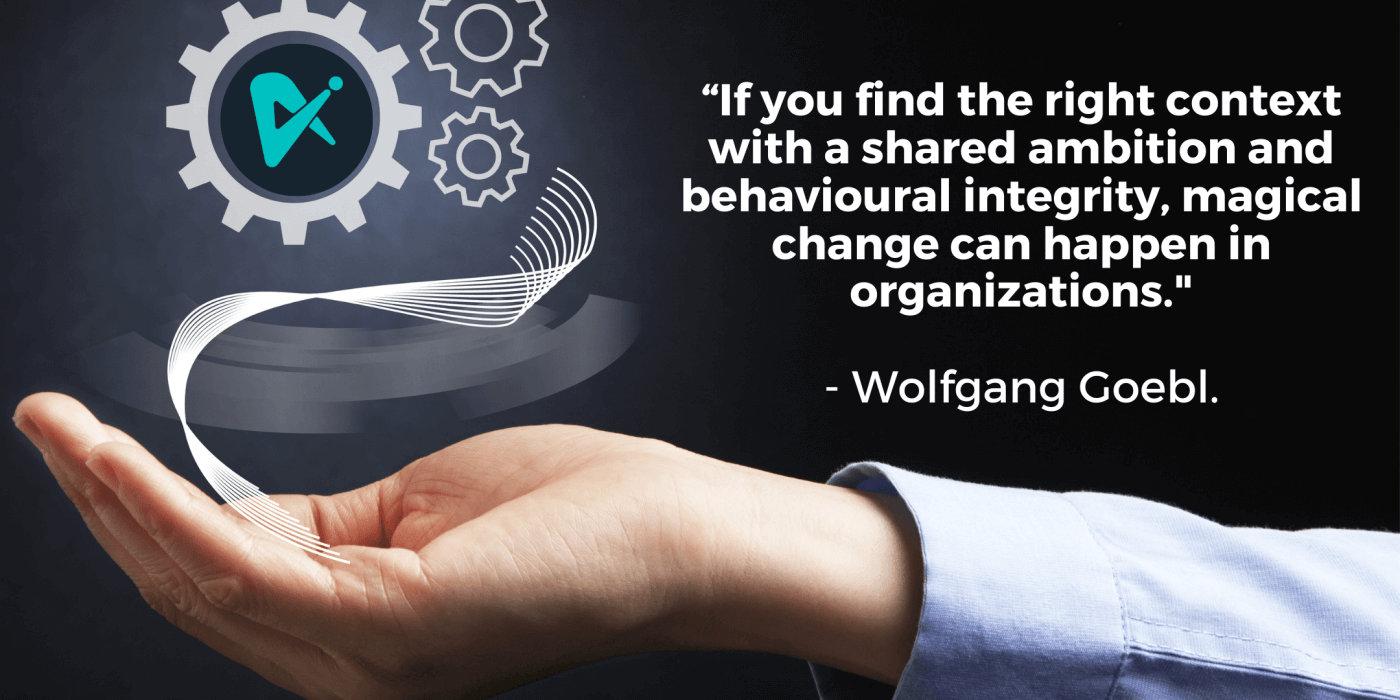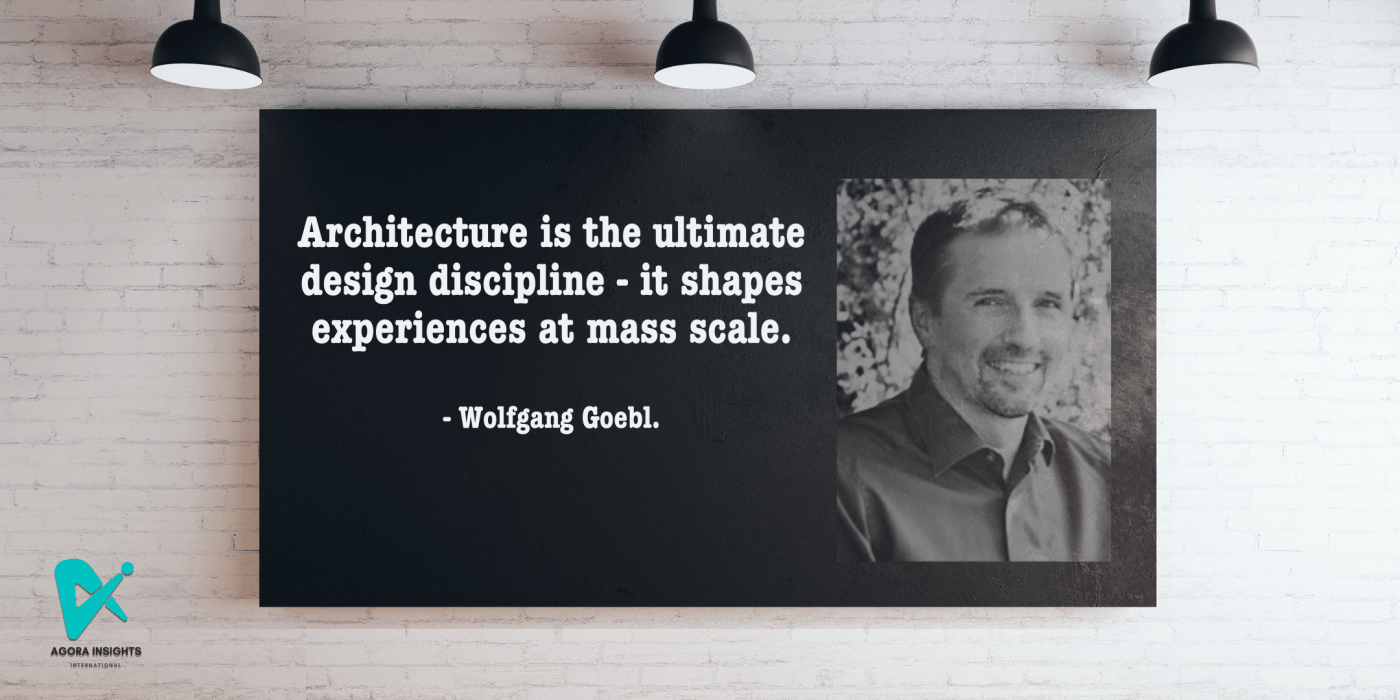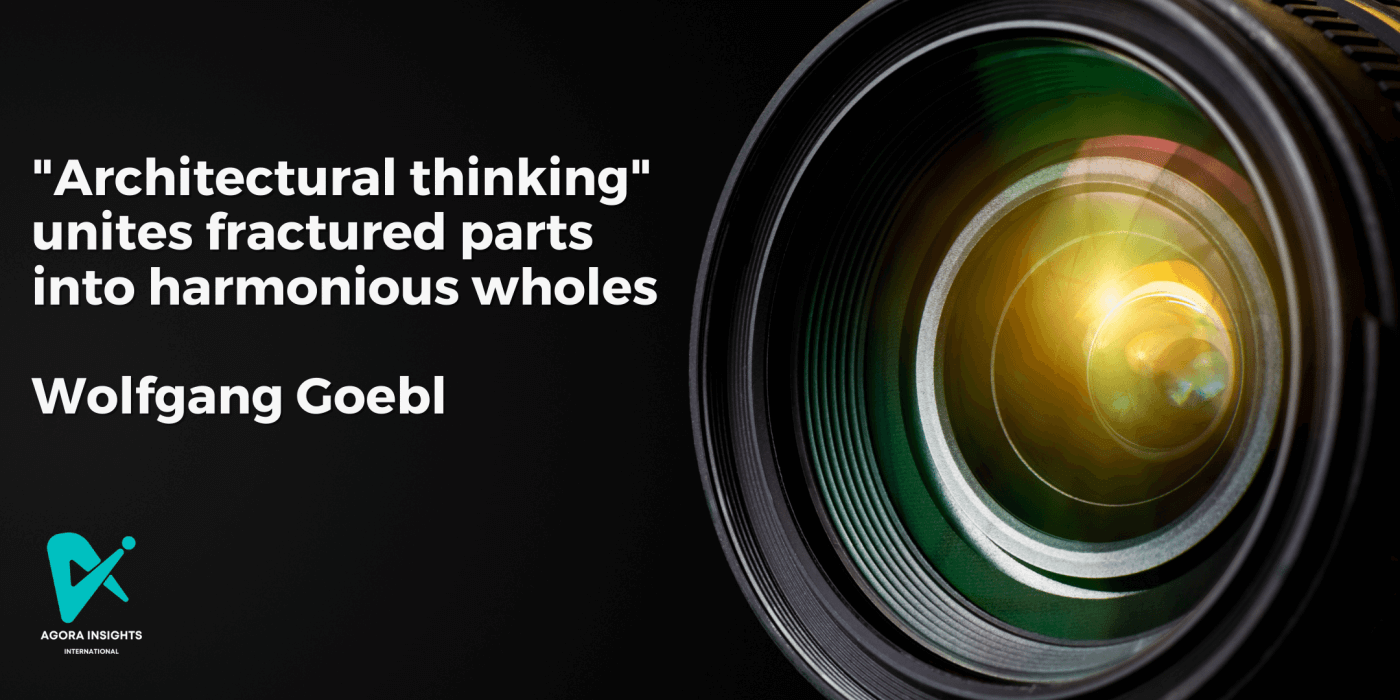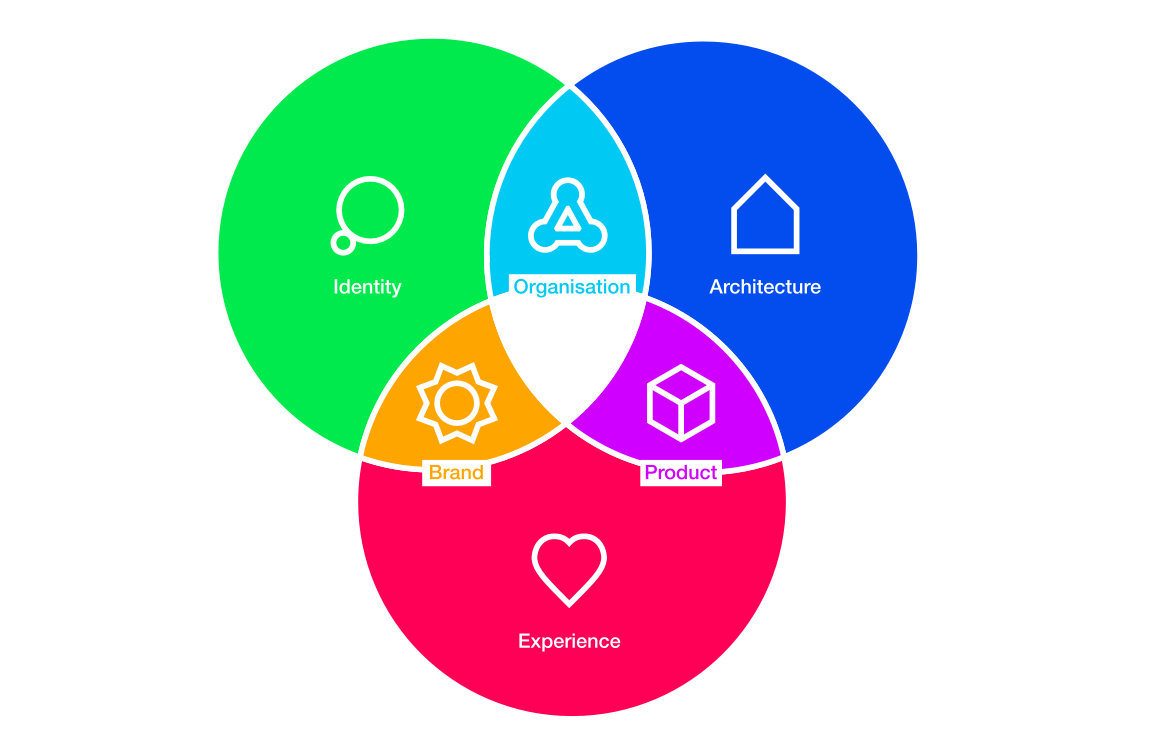I recently had the pleasure of chatting with Wolfgang Goebl, a visionary in the field of business architecture and enterprise design. His unique approach, which he refers to as "architectural thinking," and his work with the EDGY framework, offer valuable insights into the future of organizational structure and design. This tool covers the essential activities needed to create better enterprises: clarifying and exploring challenges, understanding the current configuration of enterprise elements and collaboratively charting potential futures.
"To become whole, enterprises must embrace a holistic, collaborative way of design. Transcending silos, combining perspectives, looking for connections instead of divisions. An enterprise designed together works better together."
Bard Papegaaij, Wolfgang Goebl and Milan Guenther, curators of EDGY 23.
Background
Wolfgang's journey began with a deep dive into computer science, followed by positions as a project manager, business analyst, and, eventually, enterprise architect. His experience taught him that true enterprise architecture occurs outside of IT departments. This epiphany inspired him to co-found the Intersection Group and collaborate on the EDGY Framework.
Wolfgang's journey from IT to business architecture to a broader enterprise perspective highlights the value of adaptability in one's career. He emphasises the importance of architectural thinking being accessible to business leaders and decision-makers rather than just IT departments. This shift in thought is critical for organisations that want to remain relevant and agile in a climate of rapid change.
Three Key Learning Points:
Key Point 1: Architectural Thinking and Simplification
Wolfgang emphasized the importance of simplifying architectural models to make them more understandable for business professionals. He believes that by reducing complex meta models and creating easy-to-apply tools, businesses can better align their IT and business strategies. This approach not only fosters collaboration between departments but also helps in making more informed decisions that drive the company forward.
Key Point 2: Embracing Change
Throughout the conversation, Wolfgang stressed the need for businesses to be adaptable and responsive to change. He pointed out that many organizations struggle with data quality and system consolidation, which hinders their ability to leverage new technologies like AI effectively. By adopting a clear architectural framework and being willing to rearchitect when necessary, businesses can stay ahead of the curve and unlock their full potential.
Key Point 3: The EDGY Framework
Wolfgang introduced the EDGY framework, which provides a visual and structured way to look at enterprises. It consists of three facets—architecture, experience, and identity—that, when combined, offer a comprehensive view of an organization. This framework allows for a more holistic approach to enterprise design, considering the ambition and journey of the people involved.
10 Key Takeaways
- Simplify complex architectural models for better business integration.
- Foster collaboration across departments with accessible tools and language.
- Focus on outcomes, activities, and objects for a comprehensive enterprise view.
- Use visual frameworks like EDGY to facilitate understanding and design.
- Recognize the importance of aligning IT strategies with business goals.
- Be adaptable and ready to rearchitect systems to leverage new technologies.
- Understand that data quality is crucial for the successful application of AI.
- Enterprise design is not just about architecture; it encompasses identity and experience as well.
- Facilitation and coaching are key roles for architects in helping businesses navigate change.
- Encourage community involvement and feedback to continuously improve enterprise design frameworks.

Conclusion
Reflecting on my conversation with Wolfgang, it is clear that his interest in architectural thinking and enterprise design has the potential to transform how businesses approach their structures and strategies. Wolfgang's work with EDGY provides a valuable toolkit for organisations looking to navigate the ever-changing business landscape by breaking down complex concepts and promoting a language that crosses departmental boundaries. His insights are not limited to the tools themselves, but also to the value they provide in terms of creating adaptable, well-understood, and purpose-driven businesses.
Remember, it's not just about the architecture; it's about the people's journeys and shared goals. Keep this in mind as you design and plan the future of your own organisation.
“If you find the right context with a shared ambition and behavioural integrity, magical change can happen in organizations."
Wolfgang Goebl.

To get weekly videos and interviews from leaders around the world subscribe to our Blueprints for Success Newsletter on LinkedIn
Learn more about Wolfgang
Wolfgang Goebl is the Founder and President of the Intersection Group and an Enterprise Design Coach and IT Enterprise Architect at Austrian Power Grid. He is one of the authors of the book “Enterprise Design Patterns” and the EDGY language for collaborative Enterprise Design
Enterprise Design Patterns: 35 Ways to Radically Increase Your Impact on the Enterprise
A write-up from Amazon
You are working very hard, but does it really make a difference? Are you: ● An Enterprise Architect finding your great ideas have a very limited impact on business decisions? ● A Service or UX designer tired of creating concepts that are never implemented the way you envisioned them? ● A Business Analyst wanting to work on the big picture instead of point solutions? Then this book is for you. The patterns in this book capture the wisdom of practitioners from many different fields and provide practical guidance on: ● How to deal with common obstacles in the enterprise design practice; ● Producing creations that people love to co-create; ● Building the relationships you need for collaborative design; ● Applying experience-based, pragmatic design practices. This book lays the foundation for the practice of designing enterprises to improve their Identity, Experience and Architecture.
Three Steps to regain control over your IT Landscape
Other Interviews with Wolfgang
Architecture frameworks should be as intuitive as using an I-Phone
Intersection23 - An interview with Roger Burlton
Social Media Links
Post sponsored by Agora Insights Ltd




Post a Comment